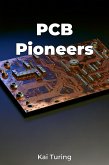The book's systematic approach begins with core physical principles before diving into specific applications. In the musical instruments section, readers discover how digital technology has revolutionized sound creation and recording, while the imaging systems chapter traces the evolution from traditional film to modern digital sensors. The final section on measurement tools provides crucial insights into the relative strengths of analog and digital instrumentation, supported by detailed technical data and real-world case studies from recording studios and scientific laboratories.
What sets this book apart is its balanced, objective examination of both technologies, acknowledging digital precision while respecting analog's unique characteristics. Through mathematical models, circuit diagrams, and practical exercises, it makes complex concepts accessible to engineering students and professionals alike. The inclusion of interdisciplinary connections to computer science and physics, combined with its focus on quantifiable parameters rather than subjective preferences, makes it an invaluable resource for anyone working in electrical engineering or electronics.
Dieser Download kann aus rechtlichen Gründen nur mit Rechnungsadresse in A, B, BG, CY, CZ, D, DK, EW, E, FIN, F, GR, H, IRL, I, LT, L, LR, M, NL, PL, P, R, S, SLO, SK ausgeliefert werden.









